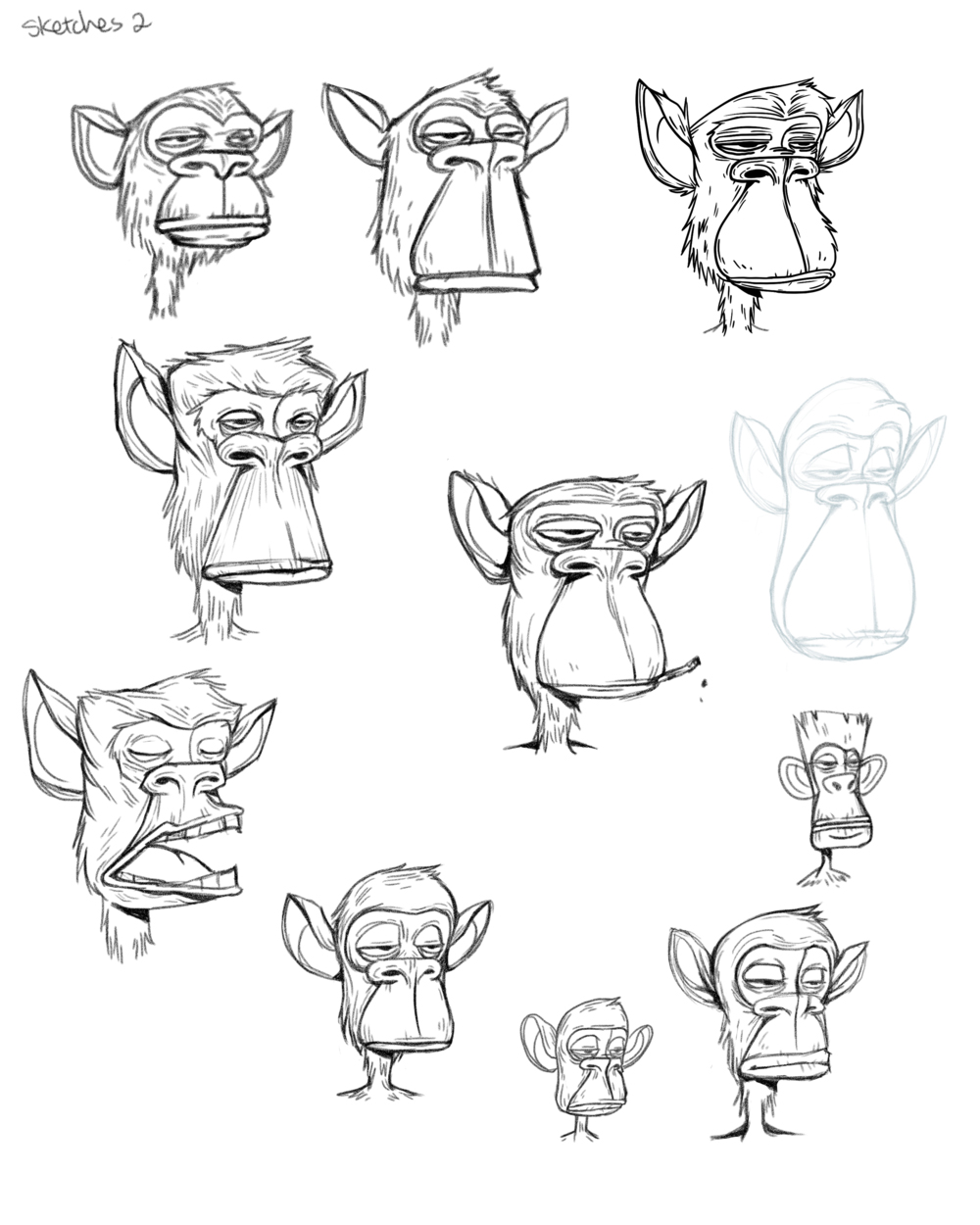Boring Ape creator, 27-year-old Chinese girl's NFT journey
Boring Ape creator, 27-year-old Chinese girl’s NFT journey
“The Bored Ape Yacht Club is undoubtedly the brightest new star in the crypto world right now, but most people probably haven’t heard of the creator of this headlining NFT project, 27-year-old Asian-American artist Seneca.
Of course, for Seneca herself, she had no idea that this body of work would be the catalyst for a technological revolution.
Today, the Bored Ape Yacht Club is definitely one of the world’s biggest NFT projects, and since it first appeared last May, it has quickly exploded onto the Internet, with prices rising to millions of dollars at one point. However, Seneca, its creator, was completely unaware that her work had become so popular until late last year, when she searched for the name on Google and woke up to it.
It’s no exaggeration to say that the Bored Ape Yacht Club has generated over $1 billion in revenue and drawn mainstreamers to the crypto space as well. Yet Seneca, who was at the heart of the project and played an integral role in turning the idea into a reality, has received no credit.
It’s a bittersweet feeling to watch NFT enthusiasts carry their various creations to every corner of the Internet. Imagine walking casually into a museum and finding your artwork hanging on a wall adorned with velvet ropes; similarly, when Seneca logged onto Twitter (her Twitter handle is All Seeing Seneca) and saw that NBA star Steve Curry was using her portrait as his avatar, she Her eyes widened in amazement.
“It really took me a while to digest it all,” says Seneca, sitting cross-legged on the floor of her Manhattan apartment living room in front of a small gray couch - with a random pile of pastels underneath - “ The world is changing so fast, and I’m still the same me.” Behind the couch is a small, cluttered work area - a studio, Seneca calls it.
Born in the U.S. to Chinese parents, Seneca grew up in Shanghai and attended Rhode Island School of Design in the U.S. After graduating in 2016, Seneca moved to New York City as a freelance illustrator, and this corner of her apartment became her office, where she specializes in designing vibrant, fantastical characters for advertising and marketing campaigns, such as some 2D animations. (Although her past work has been more of the same. (Although her past work was more abstract, she had to find a “realistic” way to translate her creative passions into currency.)
At the time, a creative agent named Nicole Muniz stumbled upon Seneca’s college portfolio and admired her skills, saying, “I really liked Seneca’s work, down to the fine lines and brush strokes. As a result, she began introducing Seneca to companies in a variety of industries, such as healthcare, insurance, green energy, and finance. Last year, Nicole Muniz gave Seneca a call with an offer: her childhood friend was creating something called the Bored Ape Yacht Club, and she joined the project as a consultant, although the team still needed some graphic designers to create the images. Virtually all of this happened in the early days of the NFT industry, and no one could have predicted that NFT would take the entire Internet by storm in its later years.
Nicole Muniz immediately thought of Seneca because of her “chameleon” ability, and she considered Seneca one of the few artists who could paint differently depending on the subject and the project. Now Nicole Muniz is co-CEO of Web 3 company Yuga Labs, the company behind the Bored Ape Yacht Club, whose other co-founder, Gargamel, is also impressed with Seneca’s Gargamel, another co-founder of the company, was also struck by the “expressiveness” of the character Seneca created, saying.
“It’s very, very rare. I could feel a whole range of emotions being conveyed. With the ape art design, we saw the kind of emotion we wanted: a sense of existential boredom.”
Nicole Muniz echoed this sentiment and said, “Seneca is particularly good at expressing that and bringing the character designs to life.”

In another work, “Can I Be M0ther,” Seneca shows the same girl. This time, however, her bug-like eyes appear soft and angular, as they shed thick, sticky tears and it is unclear whether veins, wires or threads are slipping out of them. These “fluids” fall and wrap around the girl’s outstretched hands, which hold what appears to be a faulty toy ape.
“As a commercial artist, I see myself as a kind of agent,” Seneca explains. “Art is an extension of your rich emotions, and art is very personal, and in a way you have to distance yourself from the work to experience that. That work is very much like me saying, ‘Can I take back my work? Can I regain my identity as an artist?
Seneca believes that her state may be caused by “lucid nightmares” that have plagued her for as long as she can remember. Seneca says she has memories from when she was three years old, but she had a nightmare - “I was in a stroller.
“I was sitting in a stroller,” Seneca recalled, “and it gave me a sense of smallness and vulnerability.”
Seneca doesn’t elaborate on the dreams, but we can already realize that these grotesque themes have been permeating her work, which she says is inspired by cosmic horror. Speaking of her early years, Seneca said.
“I was more interested in my imagination than in reality.”
Seneca confesses that she remained silent for most of her life and for much of her childhood, sometimes experiencing “fully lucid hallucinations. “
Every day before going to bed, Seneca remembers all the profound fears she experienced, thinking that if she could face them head-on, they wouldn’t appear in her nightmares - but often the opposite is true, and this mindset keeps her awake. “I don’t want to sleep because I’m afraid I’ll jump into that world of fear.”
Only recently has Seneca come to terms with the “crazy part” of it - turning her inner “surrealism and meaningless dark art” into something beautiful. In Seneca’s opinion, this approach is very healing. “That’s why I chose to do it,” Seneca explains, while admitting that she doesn’t want to share it with many people because she’s afraid they’ll think she’s “crazy.
However, Seneca is lucky.
What she feels is “crazy”, or “some form of crazy”, is very popular in the Web 3 space. Frankly, cryptocurrencies wouldn’t exist without the “impulse to deviate from the norm. Seneca said she hopes the NFT industry will still thrive in the years to come, and thanks to her experience with the Bored Ape Yacht Club, she has learned “a rich lesson in life,” so she hopes other aspiring creators will learn more about NFT and smart contracts, royalties, and more. Seneca admits: “Be strong in your beliefs and work very hard and be patient with yourself. Treat yourself well. In the crypto community and in the NFT space, things can move very fast and you need to keep an eye on it, but don’t care, focus on the track you’re best at and you’re bound to do well in the end.”
Of course, the so-called “good” is relative.
Although we don’t know how much Seneca has gained, at least for herself, the ratio of giving to getting is “not ideal. However, Seneca insists that she is grateful for the experience and for entering a completely unimaginable field, and since entering, she has become a firm believer in the idea of NFT as a way to validate and preserve art, provide royalties to creators, and make the art world more inclusive and less dependent on traditional galleries.
Seneca believes that the second NFT series she created, known as Iconoclast, is actually an extension of the surrealist foundation, but the work is more daring than ever. In fact, Seneca is very cautious when discussing her ongoing work, and always emphasizes mental health and the strength of strong women (although her new work may contain some “critical” sentiments).
Seneca concludes.
“I’m very optimistic about the NFT field, and I feel I’m perfectly capable of navigating it.”



